#innovation outpost
Text
Book recs: Queer science fiction, part 2
There is a lot of queer sf out there, and I read a lot of sf. When I started working on this list, I quickly realized it was impossible to include all that I’ve read and enjoyed in one single rec post. Thus, this is my second queer sci-fi book rec post. For queer sci-fi part 1, click here!
A note: queer here does not necessarily mean “guarantee of an f/f or m/m ship with a happy ending”, but rather simply a significant presence of queerness. Some of the books feature no romance but has a same gender attracted/trans/a-spectrum lead, or features an m/f relationship with bisexual, trans or aro/ace characters, or simply features a world-building which is heavily queer inclusive in ways that don’t always compare to our own ideas of sexuality and gender. I have however disqualified works where the only queer presence is along the lines of “gay best friend”, word of god, and a blink and you’ll miss it confirmation that never comes up again.

For more details on the books, continue under the readmore. Titles marked with * are my personal favorites. And as always, feel free to share your own recs in the notes!
If you want more book recs, check out my masterpost of rec lists!
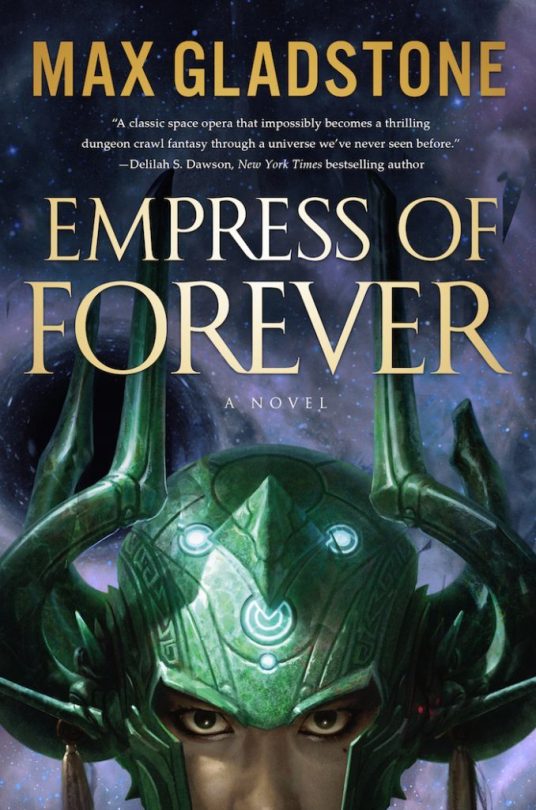


Empress of Forever by Max Gladstone
Vivian Liao is a highly successful innovator, but she may have bitten off more than she can chew and fears the government may be coming for her. As she goes into hiding, she attempts to pull off one last stunt that could fix everything - but something goes wrong, and suddenly Vivian finds herself waking up in the far future, under attack by an army of robots in space. Hoping to find her way back home, Vivian must assemble a crew of dangerous outlaws to help her hunt down the Empress of Forever, the all-powerful entity who pulled her into the future. Lesbian main character.
The Mimicking of Known Successes by Malka Older
Novella. On the outpost of a human colony by Jupiter, a man has gone missing. On the case to find him - and figure out why he disappeared in the first place - is enigmatic investigator Mossa. Her search leads her to the colony's university, and with it, her ex-girlfriend Pleiti, expert on Earth's pre-collapse ecosystem. Together they come to realize that the case is much larger than just a missing man, and could decide the outcome of humanity's very future. Sapphic.
My Heart is Human by Reese Hogan
Nine years ago, all complex technology was made illegal. This complicates life for Joel, young transgender single father, as a bionic just uploaded itself into his brain without consent. Scared of losing his daughter, Joel tries to keep the bionic secret while using it to fix his life, but things quickly get more complicated as the bionic gains more and more control of his body. A bit simplistic in writing style but makes a lot of cool parallels of bodily autonomy to Joel’s experiences as a transman. M/M romance.

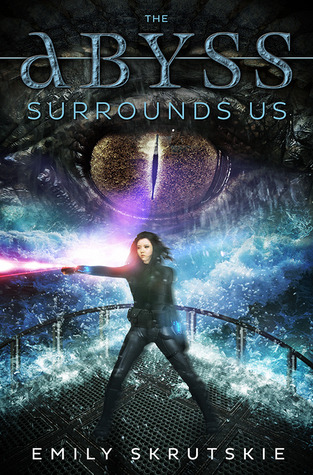
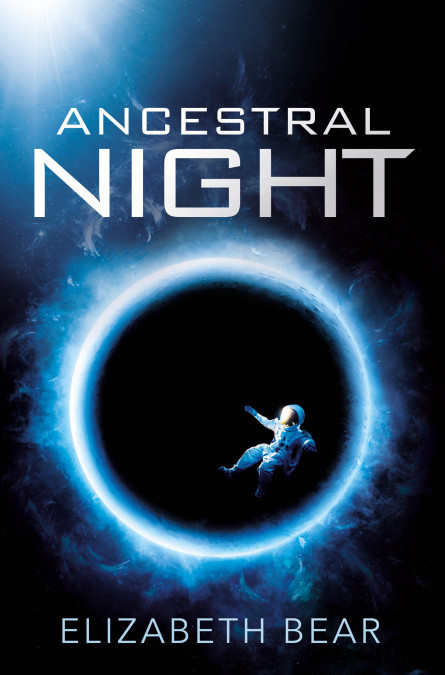
The Vanished Birds by Simon Jimenez*
A strange child lands on an isolated planet, scaring its inhabitants into handing him over into the hands of Nia Amani. As captain of a transport ship, Nia is not only the planet's only contact with the outside world, she is also a woman out of time, years compressing into months as she travels through space at high speeds. Now responsible for a child who doesn't speak and in a galaxy that wishes them ill, she must rethink exactly what she wants to do with her life, and what she's prepared to give up. Features multiple major queer characters.
The Abyss Surrounds Us (The Abyss Surrounds Us duology) by Emily Skrutskie
Young Adult. Tumblr classic back in the day! Cassandra Leung's family are keepers of sea monsters, genetically engineered and trained to protect ships from pirates. On her first solo mission, Cas finds herself kidnapped by pirates seeking to obtain their own monster. Now they need her help to train it. As Cas seeks to regain her freedom, she must also reckon with unfortunate growing feelings for one of the pirates keeping her under guard. Sapphic.
Ancestral Night (White space series) by Elizabeth Bear
Haimey Dz is part of a three-man salvage crew in space (one of the crew being the sentient spaceship himself). When the small crew comes across a derelict ship that proves the scene of a horrible crime, they must go on the run as they seek to uncover a conspiracy that involves both ancient secrets older than humanity itself, and Haimey's own hidden past. On their tail is a dangerous space pirate, convinced that Haimey is the key to it all. Lesbian main character.
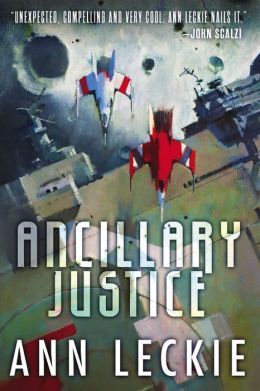
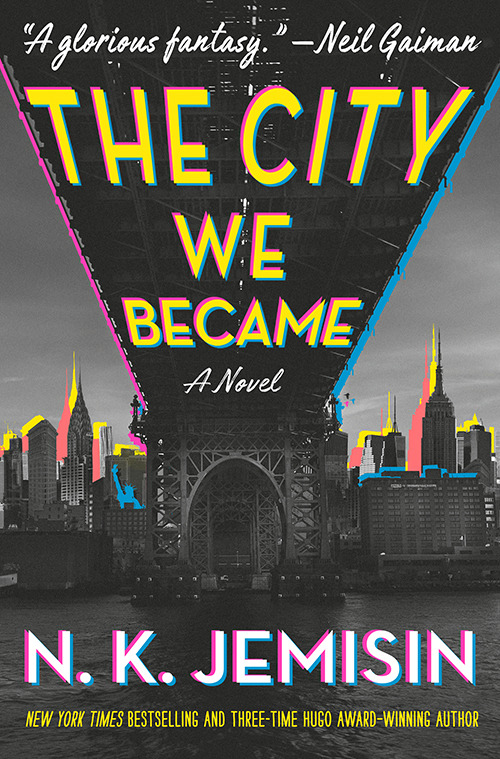

Ancillary Justice (Imperial Radch) by Ann Leckie*
A space opera in which sentient spaceships can walk the ground in stolen human bodies, so called ancillaries. One of these ancillaries, the sole survivor after the complete destruction of her ship and crew, is one the hunt for revenge against the most powerful woman in the empire. This series does very cool things with gender!
The City We Became by N.K. Jemisin
Five New Yorkers find themselves experiencing strangness as the city itself begins to wake up. They are its soul, its avatars and its protectors, and now they must keep it safe as it wakes as something alien and monstrous attempts to kill it before it's even fully alive. Mix of sci-fi, supernatural, and lovecraftian horror. Multiple pov characters of varying queer identities.
Gideon the Ninth (The Locked Tomb series) by Tamsyn Muir*
Gideon, raised as a swordswoman by unfriendly nuns, would rather run away and make her own life, but her services are needed. The Reverend Daughter, Gideon's childhood nemesis, has been invited to a trial to win a place as an immortal by the Emperor's side, and she's in need of a bodyguard. Listen, if you’re on tumblr I probably don’t need to explain this book to you. Trust me when I say it’s exactly as good as people claim. Humorous and spooky but also absolutely gut wrenching and clever with a lot of political commentary. There are also, indeed, lesbian necromancers in space.
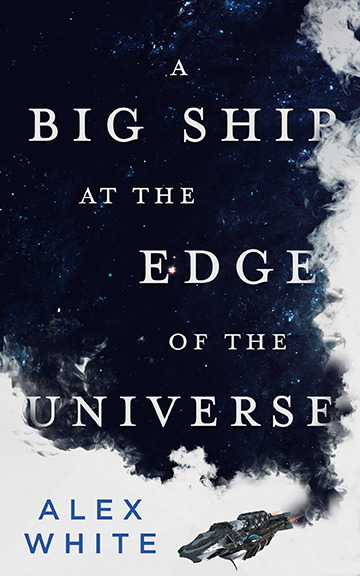
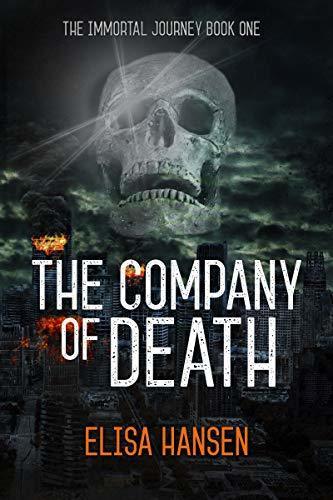

A Big Ship at the Edge of the Universe (Salvagers trilogy) by Alechia Dow
In a universe run on science and magic working hand in hand, Boots Elsworth makes a living selling fake treasure maps and Nilah Brio is a racer. When one of Boots' maps turns out to be more real than expected and Nilah has to go on the run after having been framed for a murder, the two find themselves on the same spaceship, working with Boots' old captain to find the rumored treasure and reveal the conspiracy its hiding before the people hunting them catch up. Features a main f/f relationship.
The Company of Death by Elisa Hansen*
A wild mix of genres, where a zombie apocalypse has struck and vampires gather up humans to keep their food source from going extinct, a robot travels across America with a young man she’s tasked to keep safe, and former-vampire-hunter-recent-zombie Emily teams up with Death himself to stop the apocalypse. Features bi and ace characters! Bonus rec: the author also runs the youtube channel Maven of the Eventide, where she talks about various vampire media. Check it out!
Light from Uncommon Stars by Ryka Aoki
Shizuka Satomi is a violin master who made a deal with a devil, and who must now save her soul by delivering the souls of her students in place of her own. Lan Tran is a mother and a refugee of an alien war, hiding on Earth with her children in a donut shop. Katrina Nguyen is a trangender runaway and violin player, in the need of a mentor. As their paths cross, their lives change forever. I would categorize this as cozy, however it does also deal with some pretty heavy themes.

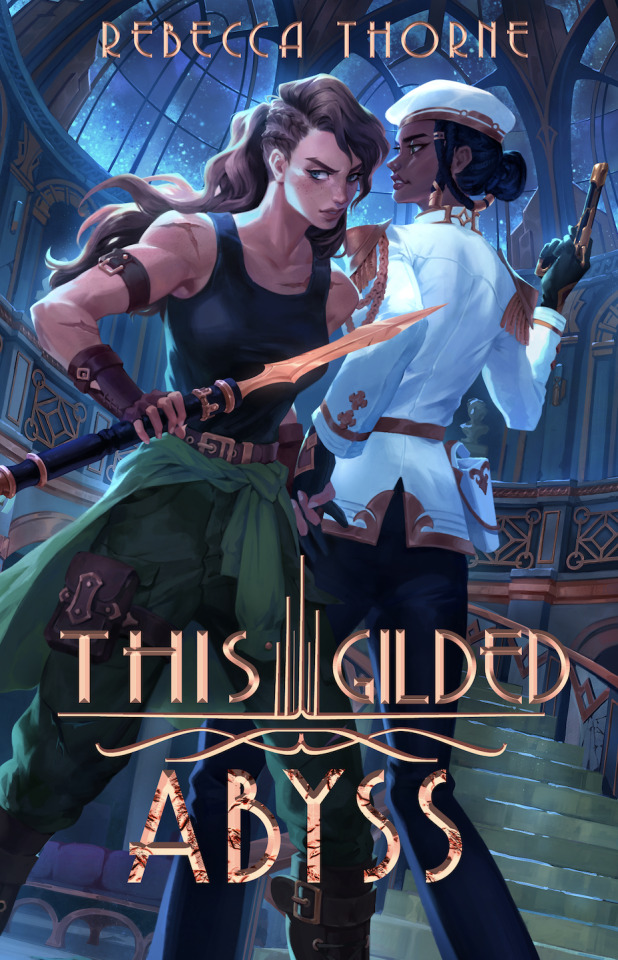

The Summer Prince by Alaya Dawn Johnson*
Young adult. Young artist June Costa lives in Palmares Tres, a beautiful, matriarchal city relying heavily on tradition, one of which is the Summer King. The most recent Summer King is Enki, a bold boy and fellow artist. With him at her side, June seeks to finally find fame and recognition through her art, breaking through the generational divide of her home. But growing close to Enki is dangerous, because he, like all Summer Kings, is destined to die. While the main relationship is m/f, it features a worldbuilding where bisexuality is the norm, which is portrayed in its major characters.
The Gilded Abyss by Rebecca Thorne
Nix Marr is a soldier and damned good at it, but that doesn't prepare her for her next mission: bodyguard for Subarch Kessandra, beloved royal and Nix's bitter ex, as she ventures into the underwater city of Fall to seek the cause of a bloody murder spree and a possible deadly contagion. But Kessandra has enemies, the answers she seeks marking her as a possible threat for the nation's rulers. On their way in an isolated and enclosed underwater ship toward Fall, the contagion catches up, and Nix will have to put her hurt feelings aside if the two are to arrive alive. Sci-fi with flavors of horror and the supernatural.
Adaptation (Adaptation duology) by Malinda Lo
Young adult. Strangeness is afoot: all over America, birds are hurling themselves against airplanes and causing crashes. As flights are canceled and travelers stranded, Reese and her debate partner and longtime crush David are forced to head home by car. Accident strikes, and the two wake in a military hospital with no memory of the last month. Returning home, strangeness follows the two, especially as Reese encounters the mysterious and beautiful Amber Gray, who may know more than she lets on. Features a bisexual love triangle.



Lizard Radio by Pat Schmatz
Young adult. Fifteen-year-old Kivali, abandoned at birth and adopted by the nonconformist artist Sheila, has as a girl in boys clothes never fit in with the other kids. Sheila has always been supportive, until she one day sends Kivali off to CropCamp. While Kivali chafes at the strict rules of the camp, she also finds herself making friends, and maybe more, for the first time. Strange coming of age story, featuring exploration of gender and sexuality in a dystopian setting.
Isle of Broken Years by Jane Fletcher
Young spanish noblewoman Catalina thinks she’s done for when the ship she’s traveling on is attacked by pirates and she’s captured. Things gets worse when the entire crew is stranded on an inhospitable island where time works strangely, dangerous monsters terrorize the woods and something alien stops them from leaving. Strong Lost vibes. Lesbian romance. Admittedly quite indulgent but very fun and creative.
All Systems Red (The Murderbot Diaries) by Marta Wells*
After having hacked its own governor module, SecUnit uses its small amount of new freedom to secretly download and watch as much media as it can between doing its job guarding humans. But when the scientists it’s been charged with keeping safe come under attack, it must make a choice about whether to continue keeping its freedom secret or risk it all to save them. The series features both novellas and full length novels, and balances humor with scathing critique of capitalism. While it can be debated whether SecUnit counts as agender, asexual and aromantic, as it is a robot (I leave this up to individual judgmenet), however the series also has a diverse cast overall.



The Quiet at the End of the World by Lauren James*
Young adult. After the spread of a global virus causing infertility, teenagers Lowrie and Shen are now the youngest humans alive as the adults around them race to find a cure. As they investigate the ruins of the world, the two come across records from the past, of how grief stricken people turned to raising artificial children in apps and how these 'children’ developed, and through these records the two learn of their history. Bisexual main character.
Chain-Gang All-Stars by Nana Kwame Adjei-Brenyah*
In a near future America, inmates on death row or with life sentences in private prisons can choose to participate in death matches for entertainment. If they survive long enough - a rare case indeed - they regain their freedom. Among these prisoners are Loretta Thurwar and Hamara “Hurricane Staxxx” Stacker, partners behind the scenes and close to the deadline of a possible release - if only they can survive for long enough. As the game continues to be stacked against them and protests mount outside, two women fight for love, freedom, and their own humanity. Chain-Gang All-Stars is bleak and unflinching as well as genuinely hopeful in its portrayal of a dark but all to real possible future. Sapphic.
The Disasters by M.K. England
A decade ago, the massive ship House of Wisdom was abandoned in orbit after its entire crew was killed in an outbreak in a matter of hours. Now, Zahra and her people hope to claim the ship as their own by kidnapping the sole survivor to gain access to its systems. But the danger of the House of Wisdom is far from gone. Horror, no major romance but has a major gay character.
Nax Hall may be a hotshot pilot, but that doesn't stop him from being expelled from the prestigious Ellis Station Academy in less than 24 hours. But as he's to be transported back to Earth alongside other failed students, the school is viciously attacked. Nax and the three other students only barely escape, and are left as the only witnesses - and the perfect scapegoats. Now they must go on the run together and find a way to clear their names. Bisexual main character.
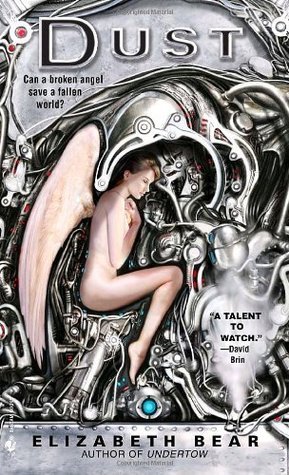

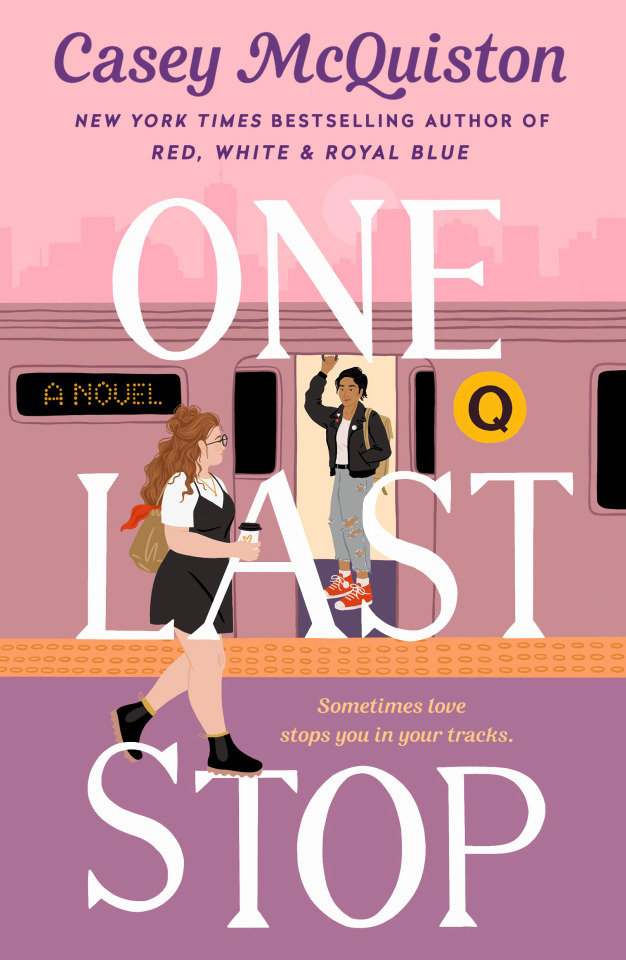
Dust (Jacob's Ladder series) by Elizabeth Bear
In a dying spaceship, orbiting an equally dying sun, noblewoman Perceval waits for her own gruesome death. Having been captured by an opposing house, her wings severed and life forfeit, Perceval’s execution is imminent - until a young servant charged with her care proves to be Perceval’s long lost sister. To stop a war between houses likely to doom them all, the two flee together across a crumbling, dangerous spaceship. At its core waits Jacob Dust, god and angel, all that remains of what the ship once was. And he wants Perceval. Sapphic and asexual characters, however be prepared for kinda fucked up relationships.
Under Fortunate Stars by Ren Hutchings
Two ships have gotten stuck in a rift in space, isolated outside of time. One of them is the Jonah, a ship dodging a generations long war against an alien species, carrying a small crew of smugglers, an unintended passenger, and a hijacker. The other ship is the Gallion, which arrived from 150 years in the future carrying an alien ambassador - and whose crew is awestruck at meeting the heroes of the Jonah, known to have ended the war. As the two crews struggle to understand each other's timelines, they must also work together to leave the rift before they're stranded forever. Multiple queer characters, however the main romance plotlines are m/f.
One Last Stop by Casey McQiston*
Twenty-three-year-old August has a lot to deal with. She just moved to New York, got new job at a pancake diner, and acquired several slightly chaotic roommates. So what if she likes to flirt with the pretty girl on her subway commute? But Jane turns out to be more than just a charming stranger: she's lost in time, displaced from the 70s, and unable to leave the subway. Romance with a dash of timetravel sci-fi, One Last Stop is a delightful story of love and queer community.

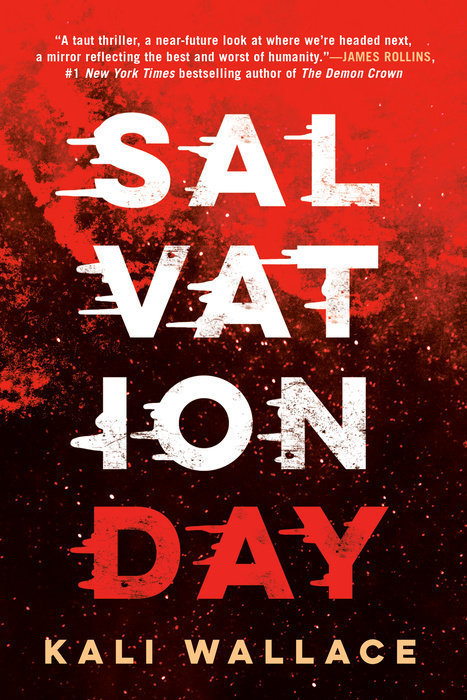
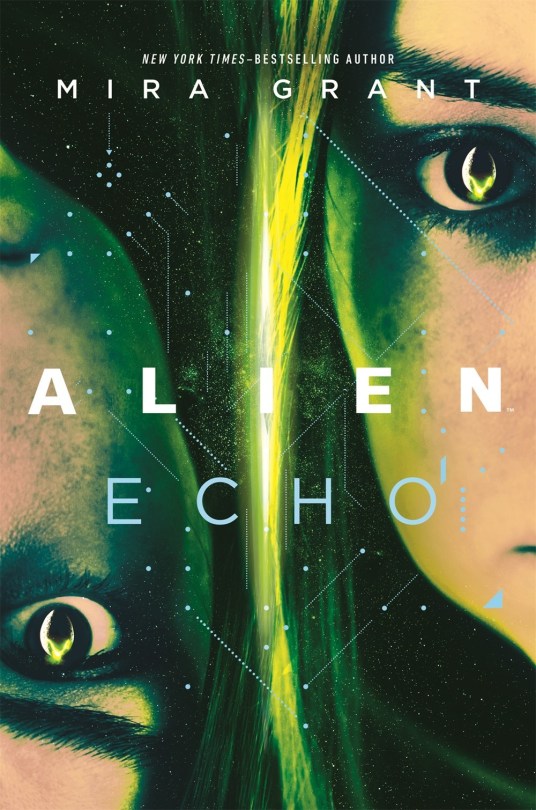
The Women Could Fly by Megan Giddings*
In an alternate version of our present, the witch hunt never ended. Women are constantly watched and expected to marry young so their husbands can keep an eye on them. When she was fourteen, Josephine’s mother disappeared, leveling suspicions at both mother and daughter of possible witchcraft. Now, nearly a decade and a half later, Jo, in trying to finally accept her missing mother as dead, decides to follow up on a set of seemingly nonsensical instructions left in her will. Features a bisexual lead!
Salvation Day by Kali Wallace
A decade ago, the massive ship House of Wisdom was abandoned in orbit after its entire crew was killed in an outbreak in a matter of hours. Now, Zahra and her people hope to claim the ship as their own by kidnapping the sole survivor to gain access. But the danger of the House of Wisdom is far from gone. Horror, no major romance but has a major gay character.
Alien: Echo by Mira Grant
Young adult. Twin sisters Olivia and Viola's parents are both xenobiologists, bringing them all over the galaxy. Most recently they’ve settled on a new colony world to study its life, but it proves more dangerous than they could’ve ever imagined. Under attack from alien monsters, the sisters must keep each pther alive while also coming to terms with a dark family secret. Sapphic horror. Part of the Alien franchise but stands well on its own.
#nella talks books#empress of forever#a mimicking of known successes#my heart is human#the vanished birds#the abyss surrounds us#ancestral night#imperial radch#the city we became#the locked tomb#a big ship at the edge of the universe#the company of death#light from uncommon stars#the summer prince#the gilded abyss#adaptation#lizard radio#isle of broken years#the murderbot diaries#the quiet at the end of the world#chain-gang all-stars#the disasters#under fortunate stars#one last stop#the women could fly#salvation day#alien echo#jacobs ladder
59 notes
·
View notes
Note
On Twt you had mentioned dead colonies, could you talk a bit about it? I'm curious to learn more 👀
I absolutely can!
Dead Colonies
At the tail end of the Quintesson reign and well into the Zeta era, the Cybertronian project began to expand into space, looking to establish itself as a galactic empire (similar to the Quintessons they were following). The new regime's optimism made promising projections about the affair, anticipating the colonies they established would become vital trade hubs, resource hotspots, societies, and even tourist destinations (though some of Cybertron's ultra-wealthy indulged, space travel was far too expensive for this to ever become viable). Although the industry boom following the socio-economic institution of the Caste system gave this ambitious promise legitimacy, it was, in hindsight, completely doomed from the start.
In their heyday, however, it was easy to ignore the warning signs. These colonies stretched from nearby satellites to planets in neighboring solar systems, and they were established to varying degrees of complexity. Some stations were only ever meant to be extraction ports for valuable natural resources. The most famous of these colonies, however, were the settled territories, where groups of Cybertronians were planted and expected to live indefinitely.
Once established, these territories developed independently of Cybertron's culture and society, similar to how the flying polity of Vos maintained its own social identity. In many ways, they were like miniature civilizations of their own, only sponsored and supplied by the Cybertronian government. One example of where their societies differed from the start was in the practice of mooring Titans.
Titans are a subclass of life on Cybertron. They are theorized to be the missing link between Cybertronians and the Primus Superorganism, though that theory is highly controversial. Many Titans are dormant now, existing in a state of extended stasis, but many Polities on Cybertron were established around or even on these Titans, although the full extent of their symbiotic link has been lost to time. Unlike Cybertronians, Titans exist throughout the observed galaxy, likely supplanted by space debris. Though it served no immediate practical purpose, several of these colonies sought out these space Titans to cohabitate with. The most infamous colony to adhere to this practice was Caminus.
Caminus was an extremely ambitious project. It was the farthest of the Cybertronian colonies, whose "bridge" (a series of space stations facilitating navigation to the planet, without which many outgoing ships were lost) was considered a revolutionary innovation in space travel. For a long time it was a shining example of what interstellar expansion should be. A lush natural ecosystem native to the planet, constant technological innovation, a rich independent culture, and a general appearance of abundance made it exotic and attractive to the citizens back on Cybertron.
The colonies existed in excess for a while. Soon, though, the explosion of prosperity and industry from Zeta's widespread mechanization started to trail off, and the Energon crisis was almost inevitable on the horizon. The long-term goal that underscored the effort of space expansion was to eventually find another source of Energon, but that goal was never achieved; by consequence, the endeavor of supporting these colonies became expensive and unwieldly. There was no real end benefit besides maintaining an illusion of abundance.
One by one, the central Cybertronian government slowed down, and eventually cut off, support to these Colonies, markedly including the shipment of Energon. Some of these stations were evacuated with the hopes of reintegrating their residents on Cybertron, but many others, especially the manned trade outposts and extraction points, were simply abandoned. Rescuing everyone was just too expensive.
Of the residential colonies, only one escaped evacuation, though the story is still shrouded in mystery. Before the total cutoff, Energon shipments became increasingly more expensive, dwindling for decades. Caminus felt this bleeding and diplomatic tensions between itself and Cybertron became strained. During one shipment, with no forewarning, an outgoing cargo ship discovered that the final point of the Caminus bridge had completely disappeared, defying reason. All other communications with the colony were also completely shut off. With no way to reach them, and no way to guarantee a safe travel, the ship returned to Cybertron, and the colony essentially disappeared. The story of Caminus would become a longstanding source of mystery and intrigue back on Cybertron, though any tragedy is more a result of bureaucratic negligence than horror.
The rest of the colonies died out much less spectacularly. Now, throughout the galaxy, only old abandoned outposts remain, the skeletons of lives lived there. Like the Quintessons before them, Cybertronian expansion was destined to fail. In the end it only marked another nail in the coffin for the energy crisis, and the inevitability of domestic tensions coming to a fiery head.
63 notes
·
View notes
Text
In 1937, urban planners debated turning Tel Aviv into a ‘Riviera city’ in a proposal called the Grunblatt scheme, which is reminiscent of Le Corbusier’s unrealised 1933 Plan Obus to demolish the Cape of Algiers and construct an elevated highway along its coastline. Today, many of the Palestinian beaches belong to private developers and hotels. This is part of a longstanding policy of effacement, whereby Palestinian scenes of dispossession become sites of Zionist leisure. After the massacre of residents in al-Tantura (occupied May 22–23, 1948; population of 1,500) in 1948, the Palestinian population was driven out. A mass grave of several dozen bodies remains, and today it lies under the parking lot of Dor beach, near Haifa. These processes are not unique to Palestine, architecture and redevelopment play essential roles in the construction of a revisionist urban coloniality. Both Tel Aviv and Algiers were given the moniker ‘White City’.
But Tel Aviv is not particularly white. Off-white maybe, mostly grey. Sharon Rotbard’s WHITE CITY, BLACK CITY (2015) examines the Bauhaus style that is the city’s pride. The Ashkenazi elite of Tel Aviv sought refuge in the ‘values of order and rationality’, she explains, against ‘the amorphous black chaos’ of the present. ‘It enabled many Tel Avivians to conduct wealthy bourgeois lifestyles, and at the same time to expose a socialist and progressive façade, to take solace in the assurance that while their city was clearly grey and faded, it was actually white and clean; that although it was no more than a provincial Western outpost, it was as international as the International Style; and that although it was modern, it was historic.’
The early essays about the local International Style in HA’IR and HA’ARETZ newspapers praised it as neither historic nor revolutionary, but as a sensible innovation, emphasising ‘usability, economy, modesty, cleanliness’. Tel Aviv’s Bauhaus represents the aestheticisation of sterility, which was the style’s original function, in a clear through line from the sanatorium that helped to popularise it. The export of this architecture to the colonies held the promise of ridding the cities of their distinct character, of curing the tropics of their diseases.
These architectures, then, reinforce a psychogeography of ‘cleanliness’. In light of the increasing visibility and political power of the messianic-Zionist bloc in the Israeli governing coalition (Benjamin Netanyahu’s Likud alongside the Hasidic political parties United Torah Judaism and Shas), the re-emphasis of Tel Aviv’s White City’s heritage serves as a coping strategy of sorts for Tel Aviv’s settlers in particular. It allows them to self-narrate as ‘liberal’ and to separate themselves from an unwashed ‘Other Israel’, supporting the story that Tel Aviv’s relationship to the rest of the state is of a cosmopolitan vestigial organ. This is romantic, but untrue. While the fanatical settler foot soldiers that roam the frontier are perhaps the most visible parts of the Israeli project, a quieter enemy remains at work – the state’s bureaucratic violences, dressed as system planners and administrators. Tel Aviv’s ghouls in their windowless offices stare at population registries of Palestinians, a blinking red button in front of them, adding to their press releases a Biblical or archaeological citation to camouflage the ethnic cleansing.
155 notes
·
View notes
Text
i don't think i've ever posted a WIP teaser before, but why not start now? the end of this paragraph keeps making me laugh.
Evidence of Thelyss and Widogast’s connection is only thinly substantiated outside Rosohna. The Shadowhand was assigned to the Dynasty’s Vurmas Outpost in Eiselcross shortly after the formal conclusion of the War of Ash and Light in Unndilar 836. Reasons for the transfer are unclear in the available documentation, but contemporary writings by his court colleagues indicate that Thelyss may have requested the assignment himself in response to the war’s end. His arcane developmental research prior to the war had proved instrumental to the Kryn strategy, such as his innovation of the Resonant Echo spell, which allows the caster to create a dunamantic pseudo-simulacrum capable of casting a single spell under its own power. Other courtiers (notably, several rival mages) theorized that Thelyss was fleeing Rosohna for personal reasons ranging from embarrassment over his association with the war-ending “negotiators” to unspecified crimes against the theocracy. In regard to the latter, it ought to be noted that petty heresy was a common accusation among feuding nobility at the time, and Thelyss had cultivated few friends at the Kryn court.
from the upcoming wizard historiography fic, wherein the years of academia take over my body and get horribly mangled up with fandom.
#critical role#mighty nein#shadowgast#caleb widogast#essek thelyss#yes this is what i was using to procrastinate dissertation revisions#if even a single person appreciates this format i'll be validated (but i'll enjoy it regardless)
20 notes
·
View notes
Text
07.29.24
The B team has shown incredible coordination and successfully infiltrated STARFISH. Communication out has been limited in order to remain secret. However, infiltration agents were able to get out what STARFISH stands for: Scientists Taking Acceptable Risks For Innovating Superior Humans.
They also communicated that they found what they needed at STARFISH HQ and will be returning soon. Given that you all have been able to rouse some people, there’s theories that the volcanic plan by the other villain organization somehow interrupted STARFISH's plans. Too much competition.
Agents in central Europe were able to successfully round up the leaders of the volcanic plan, so at least that won’t be a problem anymore. It wasn’t as clean of a chase as if the usual agents had been awake, but the B team also has a network of people around the world to help out. And unlike the double-ohs, it’s not a network of one-night stands who may or may not want to kill you.
It’s going to be a tense couple days as you await the return of the undercover agents with the solution to the Big Snooze, but while you wait, the B team is going to dot their i’s and cross their t’s, making sure that every outpost has shared all their intel so that when the solution comes through it can be implemented right away.
Both stations met over 50% of the mission goals last week: way to go!
Any incomplete goals can now be moved to a success by reaching out to other Fest participants to complete in your stead or by completing them yourself if that’s easier/more practical. This will count towards completion of the overall goals during the month. There is a new tab in the Mission Tracker to help with organizing incomplete goals!
Currently, we are at a cumulative success rate of 40% for the entire month, including the monthly goals. Let's see how close we can get to 100% by the end of the month!
14 notes
·
View notes
Note
The Anachronist please! 😯
Hi there! :)
The Anachronist is an oldie but a goodie, a WIP that I started in 2021 and wrote a tidy 13k centered on that oh-so captivating feature of Aeor: stasis bubbles. However my momentum fizzled out as I got pulled into other projects. I'm including it in this meme because my motivation to finish it has been given a boost by the current Aeor arc! Nothing like seeing the source concept again to get the wheels turning.
Here's an excerpt under the cut:
“Hello, my friend,” Essek greeted quietly as he approached, smiling at the familiar joke. “How is your day?”
Inside the sphere, the Aeorian mage did not reply. He never did, of course, but once Essek had begun talking to him many months ago, he’d found it difficult to stop.
“I almost made it past the temple yesterday,” Essek reported, floating cross-legged above the cracked stones of the street, leaning his cheek tiredly on his hand. “I’ve been hoping to find another arcane canon to protect the outpost. But those ice basilisks are very frustrating. And there are three of them now, and I am low on healing potions. As a calculated risk, it did not… what is the Common phrase? Pen out.”
He paused, imagining what the mage might answer. It was a harmless game, if an undignified one. It didn't matter: no one was here to see it. No one was here to see Shadowhand Essek Thelyss, secret traitor to the Dynasty, having a pretend conversation with a relic preserved in arcane amber.
“Yes, I thought it best to stay back, as well. But now that I am here, I don’t suppose you will finally tell me where you are running off to, or what you are casting?”
Silence.
Essek sighed. “I thought not. You do enjoy your mysteries.”
Idly, Essek mimicked the somatic shape of the wizard’s hands, as he had many times before. What could this gesture correspond to? What shapes and movements came before or after? The wizard’s mouth was slightly open - the beginning of a verbal component? What was he saying?
His current guess was still something in the realm of transmutation, but he didn’t know what. There was too little information, and Essek was not a transmutation specialist.
Stirred to movement by his thoughts, Essek got up and took a slow turn around the dome. He trailed his hand across its glassy surface and left iridescent swirls of energy in his wake, like eddies in a stream. Looking down, he noted once again the stark transition between the dark grey ruin outside the dome and the smooth, painted street within it. On the inside there were even some small flowers peeking through gaps in the stone, their leaves an exotic green, their white and yellow button faces a cheerful, childish imitation of the sun that would have been overhead.
Essek hypothesized that the reason the spheres in this sector glowed so brightly was due to Aeorian sunlight captured within - its energy reflecting off the street, the people, any objects or plants - and trapped in that infinitesimal instant, forever. They reminded Essek of decorative trinkets that were popular in the Dynasty: daylight flowers preserved in a blob of resin or glass. Ranging from the size of a plum to a melon depending on the wealth of the owner, they were illuminated from within by an enchantment, a symbol of the Luxon giving life to the earth.
This frozen Aeorian mage was like Essek’s very own preserved flower. Not for religious vanity, but a symbol of learning, and innovation, and the collaboration that must have been flourishing in a city run by magic users. A symbol of a world Essek would never be able to have.
Not the warmongering - there was plenty about Aeor he would not want to replicate - but a society of thinkers and creators and experimenters, unshackled from austerity and tradition? To sit across from this man and talk openly of sacrilege? Of progress?
“Well, I suppose sacrilege didn’t work out so well for you either, considering what happened here,” Essek concedes aloud. “But I can imagine your heyday, no? The few books I have recovered speak of so much learning, so many projects - you can’t blame me for being wishful. The last collaboration I tried… did not go so well for me, as you know.” He bared his teeth in a bitter laugh.
The Aeorian mage listened to his words in silence and absolute stillness, just like he had all of Essek’s confessions. Theft of the beacons, betrayal of his people, lying to the small band of adventurers who eventually became his friends… all of it, spoken into the dusty silence of the Praesidis ward, to ears that could not hear him.
The perfect audience.
#thanks for the ask!#wip ask game#fic: the anachronist#shadowgast#asks#ariadne writes CR#i think I've shared a paragraph of this excerpt before but here is more!
13 notes
·
View notes
Text
The House of Mirrors

Chapter 9
The difference between history and a story, her father had taught her, lay in the telling.
The story of Velaris, for example. Which Nesta had learnt from her grandmother, who - by the very nature of their language - had described it as a woman, elderly and revered. The story spoke of a trading outpost at the edge of an empire, assigned the protection of a noble general and his renowned legion.
And, after the fall of the empire, the five clans descended from those soldiers founded Velaris, which was then called Calla Velaria after the Mother Goddess they worshipped and brought with them. The memory of those men still lived today, preserved in the names of streets, monuments and a few families who carried their legacy forward.
In some ways the story of Velaris had reminded Nesta of the stories she'd heard of her great grandmother, Helena Archeron, who had been born in poverty, worked her way to fame and married into money. Like Velaris, Helena had been swept into a violent revolution in her prime, but, unbroken by the turn of the wheel, had emerged an icon of the new world. One a city at the forefront of innovation and art. The other the first woman to hold a parliamentary seat in Scythia's constitutional monarchy.
But those were just stories, trimmed of fat and made easy to digest, told one way or another to suit the taste of the audience.
Histories were raw, uncut, infested with complexity and plagued by strains of fate and coincidence. History beat still warm blood into those it connected. Always on the brink of dying, of becoming myth, but persisting in a phoenix-like act of parthenogenesis. Both reoccurring and unending; like a daughter born and raised to obey her mother, who had been a daughter born and raised to obey her mother.
The history of Velaris included the brutal subjugation of the native Halian tribes, the crimes of general Artorius – murdered by his own men – and how the empire began to cannibalise itself after a long decline. It was marred with the violence of men who had been glorified in its mythology.
Not unlike her great grandfather, whom no one ever said much about.
And not unlike Tomas, who was now ingrained into Nesta's own story, venerated by her public grieving. The thought made her want to claw at her skin until it ripped, until she was able to tear it off and shed who she had become for him.
Her history - her past, present and future - like Helena, like Velaris and perhaps every woman who had ever and would ever exist, was ripe with the promise of pain.
No amount of obedience, cleverness, beauty or anything else she had ever been told to be, and broke herself to become, held the escape it promised. In fact, it only ever seemed to invite an added layer of voyeurism.
An inescapable eye which had manifested itself into her young mind and, desperate to please her mother and grandmother, pushed her to perform. To direct and play out her story in a way that satisfied. To smile even if she didn't want to and to weep in her hour of greatest relief. To wield her beauty as a weapon to win the most advantageous match, even if it meant striking down someone precious to her.
Every history could yield a dozen stories but the best of them, those that matured into myths, always tasted of some truth.
And so, in the courtyard of the Ressina Altara School of Arts, before the Hall of Lucis, under the heat of a hundred flashing lights, she posed. Because Nesta Archeron had long ago mastered the art of storytelling.
She wasn't anyone important enough to be featured on a front page after the initial buzz surrounding Tomas' murder but the undercurrent of interest persisted.
Grieving widow or scheming gold-digger, immigrant success story or foreign whore, vicious killer or beautiful victim. Tomas had come to define her story but Nesta was no passive narrator.
Her golden hair was gathered into a french bun, her black dress loose below the waist, wrapped over her breasts but cut low and off the shoulder to draw the eye, to please the audience.
She smiled in a way that only involved curving her lips, not enough to convey joy or excitement but enough that she would not be accused of sulking. Enough that no one could tell there was a scream locked behind the seam of her lips.
And at her neck lay a single, eight carat, pale sapphire, strung on a delicate gold chain interlinked with tiny diamonds; a recognisable Mandray family heirloom.
~
Mor handed Rhys a flute of champagne, no doubt provided to the Gala by a generous but well compensated patron. That was how things worked in Velaris. Push and pull. Always something to be gained.
He and his cousin stood overlooking the enormous courtyard of the Ressina from the third floor of the Hall of Lucis and it's windowpane walls. Named for a legendary figure, one Helion claimed direct descent from, and because it was an almost entirely transparent building, designed to catch light from every angle.
The courtyard was lined on either side by tall buildings. One was a set of dorms, a cafeteria and an art supply store; and the other, a collection of lecture rooms, work stations and a library.
The Hall itself sat between the two adjacent buildings, creating a large H shape. Behind it was a park sized garden open to students for leisure or use if they were in need of natural light or subjects.
Ahead of the Hall was the courtyard, now being used as a sort of runway, filled with press and recognisable faces posing against a mural print submitted by a Ressina alumnus.
The courtyard led into the Rainbow, a long, wide walkway that followed the Sidra, littered with antique stores, book-nooks and quirky cafes.
It was almost always teeming with artists doing anything from tourist trap trinkets to live music shows. Except tonight it was cordoned off on both sides and almost eerily empty. Tonight, the haves were granted the jewel of Velaris to flaunt their wealth, looks and displays of goodwill, while the have-nots were expected to be elsewhere.
Rhys took them in: Feyre in her art deco suit, somehow both loud and contained. Elain, in contrast, managing to still look soft and quiet even in a pop of pink. And Nesta, finally resembling an amalgamation of the two sides of her he had seen, still in black but not someone to be underestimated.
In some ways, he felt an odd kinship with them. They existed half in and half out. They were wealthy, and in their country, from a respected and well established family, but here, they would always be outsiders forced to tie themselves to a group of people not known for their acceptance.
Seren and Rhys had had the right family name, attended the right schools and befriended their peers. But it had never been enough. His father had been hounded with potential matches and offered affairs even when his mother had lived with them. It had broken her heart, made her distant, though she tried her best to help her children love their Illyrian blood with holiday visits, home cooked meals, lullabies and bedtime stories.
Then Seren had died. And everything changed. He’d been uncontrollable, unable to express his grief, his father had buried his head in his work and his mother had been more alone than ever.
Rhys pushed away the memory, blinked away the pain behind his eyes and focused on the scene before him, “Did you look into Mandray like I asked?”
"The Mandrays are mostly in luxury vehicles – explains the man's globetrotting and circle of rich clients become friends – they dabble in the drug trade but almost exclusively on a personal export level. For said rich clients.” Mor sipped her champagne, leaning one hand on the rough hewn oak railing before them, red lips matching her scarlet dress, “Tomas was the eldest son but with him gone, his brothers stepped up. One took the office here in the city and the other was given a property in Ravenna, initially inherited by Nesta Archeron."
A light chuckle erupted from somewhere behind them, forced and insincere, so familiar to the cousins who had grown up in a montage of prep schools, yachting and money laundering fundraisers. Not unlike the Rainbow Gala.
"The information in the three years leading up to his murder is a bit hazy. Signs his marriage was rocky, but that wasn't anything new, he’d bought a house down by Silverlake and a suite at the Pichano Maria, both now in Nesta's name. There was traces he’d somehow acquired a third stream of revenue but there's no papertrail on that outside of offshore deposits."
"And?"
"All in all, he's just some middle management crook with an okay family name, nothing stands out.” Mor seemed to chew on her thoughts for a moment, “Except his death. There was too much damage to the body for a conclusive cause of death and the crime scene had been expertly cleaned, but it was also reported relatively close to it's occurrence. Which is why no charges were pressed against Nesta. There's no way she could have done it alone but there was also no evidence of anyone else being present."
He wasn’t sure if any of that might fall into Azriel’s area of expertise but he didn’t want to underestimate the man. Rhys slid his almost violet gaze away from the courtyard and towards his cousin, “...And?”
Mor shrugged, "And nothing. You asked me to look into him so I did."
"I also know that you think I've missed something. Something about Nesta. Something I’m sure you've taken it upon yourself to not miss."
Her honey eyes bore into him, they knew each other too well, had been forged in the same fire.
Mor sighed, "Born in Scythia to a family with pro-democratic ties despite their aristocratic past; public school education; immigrated here at 14; engaged at 19; married at 20; on track to graduate top of her class at 21 and tapped by several big names including the DA herself by 23.”
Rhys nodded, he’d already pieced together most of that by himself, adding, “Except she drops out the next year and does…nothing? Parties and travels everywhere her husband goes but otherwise disappears from everything except social media and TST’s reports.”
Mor exhaled a breath full of worry, "And in that time: Mandray's sales skyrocket; he pays off all of his father’s off the record debt and invests in a couple things: tech, alternative energy, a Xianese beauty brand. They all see hit returns and, in turn, his family business is boosted by a group of newly rich CEOs and their associates.”
“Mandray might have been a good salesman but it’s not hard to guess who was really pulling the strings.” Rhys noted the hint of worry that manifested itself in a slight crease between Mor's brows. He lifted his hand, the arm of his midnight suit drinking in the light of the room, and gently pressed against the spot, earning a full frown in response.
Mor batted his hand away, “With this newfound wealth, Nesta buys out a 22% stake in TST, adding to the 10% each sister has – which she controls – bringing the business back under the family name, kicking out the investors who were trying to take over from under her father and, for a moment, it looks like she's going to take over. But then,”
“But then she actually vanishes, drops off the map.”
“Exactly. Mandray floats between Silverlake and Velaris but his trips overseas are rare and his trajectory without her is” she shrugged, “...unremarkable. Two years and no one hears from her until a 5am phone call to Silverlake Sheriff's office. No emergency call, no ambulances, just a dead body. But there’s something off about it...” at that, Mor turned a little pale, but continued "The acoustics of the lake valley, I don't know how it works but, the neighbours can always hear each other. I checked, there have been reports before, neighbours saying they'd heard all sorts of things coming from the house - parties, arguments, music she liked to dance to… but that night and the morning after, the morning she found her husband almost decapitated? Nothing, not so much as a side note in the reports.”
A chill seeped into his limbs but Rhys wasn't sure if it was because he realised he had suspected Nesta killed her husband the day he met her or, if because, now, he was less certain. The idea of retaliation, of a beaten housewife turning on her husband like a caged animal finally set loose, did not disturb him. It was only natural.
But, he thought as he turned to see the Archeron's ascending the stairs to the third floor, whatever had happened to Tomas Mandray a year ago, seemed anything but natural.
35 notes
·
View notes
Text


Jane Asher and Gawn Grainger as Juliet Capulet and Romeo in “Romeo and Juliet” presentation while being on tour in the USA, 1967. Part 2. 🩶
Previously posted pictures with my old username, updating it with the new one.
Old Vic Brings First Spoken Drama to The Music Center. By Cecil Smith. Los Angeles times— March 5th, 1967.
It seems a curious bit of scheduling to have the Bristol Old Vic in the Dorothy Chandler Pavilion of The Music Center, opening a three-week season of Shakespeare Tuesday night.The company is doing the first spoken drama ever performed in the new complex and it arrives on the threshold, the very eve, of the twin openings of the new theaters designed primarily for drama next month. Not that the spoken word is a stranger to the Pavilion. Some of the more interesting musical plays produced there, notably "Fiddler on the Roof," have been as dependent on their dramatic as on their musical structure. And if the Pavilion is fundamentally a music hall, still the verbal music of Shakespeare can be as stirring and compelling as any instrumental or vocal music ever devised. No one plays this music better than a British ensemble and among the great companies of England the Bristol Old Vic is considered one of the best. No less an authority than Sir Tyrone Guthrie says it is among the world's finest acting companies and that its managing director, Val May, is an immensely vital force in the English-speaking theater.
Suited the Action
Sir Tyrone suited the action to the word by staging the production of "Measure for Measure" that opens the BOV season here. May directed the production of "Hamlet" that enters the repertory Thursday and the "Romeo and Juliet" that will open next week. The three plays will rotate through March 25. The Bristol Old Vic was initially formed in 1946 as an offshoot, a sort of farm club for London's justly celebrated Old Vic. When the latter was melded into the British National Theater three years ago, the BOV became an independent entity.
It is supported by an annual grant of 40,000 pounds from the Federal Arts Council, plus a grant from the city of Bristol and its thriving box offices in two theaters-the legendary Theater Royal and its new Little Theater. But even in its days as m the outpost of the London company, the Bristol Old Vic had an individuality and a spirit all its own. I remember when the parent organization was in the Philharmonic on one of its tours some years ago, I asked John Neville, who was playing Hamlet, what his plans were after the tour, and he said he was leaving the London company to return to Bristol. I asked him why. "It's more adventurous, more experimental, more daring and," he smiled, "more fun."
Although the BOV is only doing Shakespeare on this first American tour under the sponsorship of S. Hurok, the Bard is not its primary product in England. The company is known as an innovator, launching new plays and new playwrights, trying new areas of stagecraft, new methods and new approaches. It was in the vanguard of the new wave of British drama that spawned Pinter, Shaffer, Osborne, Arden, Wesker, and others. It was the first company to produce an English version of Erwin Piscator's "War and Peace" (later staged with immense success in this country by the APA) and it first provided a stage for such plays as "A Severed Head" and "The Killing of Sister George." ⠀⠀⠀
The company has a vigorous acting school and training program that has a spawned a legendary crop of stars, among them Rosemary Harris, Peter O'Toole, Dorothy Tutin and Paul Rogers. m Although the concentration is on youth, many an established star has played at Bristol, including Wendy Hiller, Moira Shearer, Pamela Brown and Neville.
The Hamlet of the current company is one of England's brightest young stars, Richard Pasco. He's little known in this country, though he was in the movie "Room at the Top" and played Broadway with Laurence Olivier in
"The Entertainer." Pasco, who also plays the key role of Angelo in "Measure for Measure," told a Times correspondent in Bristol recently that he sees Hamlet as "a fish out of water." "He's plunked right in the middle of all this political intrigue and violence and that's what he hates most— violence," Pasco said.
He approves director May's decision to set the play in the Napoleonic era-"lots of conspiracy and blood around in those days." Pasco said his first West End job as an actor was in "Hamlet"-playing Fortinbras to the prince of Paul Scofield. He feels Scofield saw the character as "an angry young man." "Yet," said Pasco, "he's really pretty cool. He likes to think about things-in a world that likes to act. Not that he's unable to take care of himself—he learned that as a soldier. But he's a scholar who knows that violence only leads to more violence. It's not in his nature to do the things that have to be done.
That's the terrible part." Pasco was the original angry young man—he played Jimmy Porter in the English Stage Company's famous production of "Look Back in Anger" in 1956, which launched the new wave of British drama. Most of his career has been in classical repertory though he's also starred in British television and movies. He joined the Bristol Old Vic in 1964 for its first tour of Europe, which extended as far as Israel.
Famous member⠀⠀⠀
Actually, the most famous member of the current troupe is its Juliet, 20-year old Jane Asher-particularly with the miniskirt set. The fame that preceded her had nothing to do with her acting but her fan magazine reputation as the girl friend of Beatle Paul McCartney, which has brought out swarms of teenagers on the cross-country tour. In proper repertory fashion, she balances Juliet with the tiny role of Julietta in "Measure for Measure." There are other players quite celebrated in Britain among them, John Franklyn Robbins, Frank Barrie, Madge Ryan, Frank Middlemass, Gwan Granger, Barbara Leigh-Hunt. ⠀⠀⠀⠀⠀⠀
But as in the National Theater, the Comedie Francaise, the Moscow Art Theater, one goes to see an ensemble, not an individual. This is a new wrinkle in this country but with the success of such ensembles as the APA, ACT and others, it's gaining momentum. There's an immense sense of pride in the Bristol company and in its homebase theater, the 200-year-old Theater Royal in cred Eritain on a heater where Sarah Siddons played and Edmund Kean, William Charles Macready, Jenny Lind, Henry Irving and Ellen, Terry-the ghost of Mrs. Siddons is said to stalk its stage.
Some feel it prophetic that the Blitz, which levered much of Bristol, spared the theater. Val May accompanied his players to this country and stayed with them through their highly acclaimed New York openings, then returned to Bristol to prepare his spring season, which includes such varied offerings as "The Hostage," "The Taming of the Shrew," Galsworthy's "Strife" and Pinter's "The Homecoming."
Among three new plays to be produced is one by American author Robert Rich, "Message from the Grassroots," a play about Malcolm X with an all-white cast.
Dr. Guthrie met the troupe in Philadelphia to brush up his initial staging of "Measure for Measure," that blackest of black comedies, which was much condemned in Victorian England for its outspoken attitudes on sex and morals and its cynicism. Dr. Guthrie told me later he was quite pleased with the production and it was greeted in Philadelphia, Boston and New York with warmth and a goodly share of critical hosannas.
The play is out of Shakespeare's middle period when he was at the height of his powers, written at about the time he wrote "Othello," after "Hamlet" and prior to "Lear." Although labeled a comedy, it is quite a serious work and tragedy is narrowly averted and then only through good fortune. It's easy to see how it shocked the Victorians, dealing with the stern enforcer of a Viennese law holding fornication illegal and punishable by death.
When a young man gets his girl with child, he is sentenced to die, and his sister, a novice in a nunnery, offers her own chastity in exchange for her brother's life. What particularly upset the Victorians was Shakespeare's straightforward appraisal of humanity, as when he has the wry Pompey ask the young governor if, to enforce the law, he plans "to geld and spay all the youth of the city?" Eras change. The candor that delights one age shocks another and can delight a third. But what endures is the essential truth in the poet in his evaluation of man for all his vice and folly.
When he has Angelo say: "They say best men are moulded out of faults, and, for the most part, become much the better for being a little bad," it's downright comforting.
#jane asher#the beatles#60s#beatles girls#actress#lady jane asher#something about jane asher#model#beatles women#redhead#red hair#1960s#1967#romeo and juliet#beatles girl
8 notes
·
View notes
Text
flight rising tumblr do you have any general lore for wind clans or nature clans youre proud of? theyre the 2 elements ive had the most trouble pinning down a vibe for. posting what i have (and some brief bit of my lore for the other elements to put them into perspective) below the cut, but id love to hear what you all have in terms of lore for them
Nature: genuinely not much. 2 pearl cerdae that help guard the behemoth. the mother of snakes, a dragon who volunteered to enter the pox consulate after the armistace was broken to atttempt to seal it up and prevent it from spreading who was infected (not outright killed by luck of being born to plague) and changed into a strange beast with 3 snake heads, keeping mutated creatures in and healthy dragons out. aiming for a more brutal vibe i think?
Wind: again. basically nothing. i keep just making farmers--lotta sheep come from the windswept plateu. a few bards too but nothing Interesting, no anchoring point of conflict or creativity.
Arcane: nothing -_- magic experimentation i guess? i had some dragons who were once turned to stone as a punishment for suspicion of spreading arcane secrets, but my other dragons are very mundane which is not as fun to me. i also have a weird monster from space? i could go space ways...
Earth: focus primarily on archeologists and grave robbers, as well as long-dead creatures brought to life by a shifting in ley lines
Fire: definitely leaning into the magmablood rebuke, forgemasters and rebels, bigotry and classism, pollution and unionizing
Water: ive made a breakthrough leaning into the darker sides of their lore (prisoners and the like) but leaning into sea witches and pirate crews. the core story is an undead former pirate who died in a storm and her wife who searches for her, most of my water dragons are either related to the search or former crew members
Lightning: scrappers and engineers, industrialization and innovation. trying to survive in a climate that hates you.
Ice: outward expansion of gaoler outposts and increasing shade incursions. guides across the ice field.
Light: so much. investigation into ruins of past civilization, secrets and lies, shade bubbling up beneath.
Shadow: behemoth ghostly warriors in the brambles, dragons that mislead for fun, a faction of fanatics determined to blot out the sun.
Plague: a wasteland empty, capitalized on by strange magic-users and crime rings. the illegal gladiatorial pits originated here (<-borrowed lore). the undercroft is a honeycombed metropolis stretching deep underground, and within it a dragon creates flesh constructs, seeking revenge on those who scorned her.
18 notes
·
View notes
Text

Measuring moon dust to fight air pollution
Moon dust, or regolith, isn't like the particles on Earth that collect on bookshelves or tabletops—it's abrasive and it clings to everything. Throughout NASA's Apollo missions to the moon, regolith posed a challenge to astronauts and valuable space hardware.
During the Apollo 17 mission, astronaut Harrison Schmitt described his reaction to breathing in the dust as "lunar hay fever," experiencing sneezing, watery eyes, and a sore throat. The symptoms went away, but concern for human health is a driving force behind NASA's extensive research into all forms of lunar soil.
The need to manage the dust to protect astronaut health and critical technology is already beneficial on Earth in the fight against air pollution.
Working as a contributor on a habitat for NASA's Next Space Technologies for Exploration Partnerships (NextSTEP) program, Lunar Outpost Inc. developed an air-quality sensor system to detect and measure the amount of lunar soil in the air that also detects pollutants on Earth.
Originally based in Denver, the Golden, Colorado-based company developed an air-quality sensor called the Space Canary and offered the sensor to Lockheed Martin Space for its NextSTEP lunar orbit habitat prototype. After the device was integrated into the habitat's environmental control system, it provided distinct advantages over traditional equipment.
Rebranded as Canary-S (Solar), the sensor is now meeting a need for low-cost, wireless air-quality and meteorological monitoring on Earth. The self-contained unit, powered by solar energy and a battery, transmits data using cellular technology.
It can measure a variety of pollutants, including particulate matter, carbon monoxide, methane, sulfur dioxide, and volatile organic compounds, among others. The device sends a message up to a secure cloud every minute, where it's routed to either Lunar Outpost's web-based dashboard or a customer's database for viewing and analysis.
The oil and gas industry uses the Canary-S sensors to provide continuous, real-time monitoring of fugitive gas emissions, and the U.S. Forest Service uses them to monitor forest-fire emissions.
"Firefighters have been exhibiting symptoms of carbon monoxide poisoning for decades. They thought it was just part of the job," explained Julian Cyrus, chief operating officer of Lunar Outpost. "But the sensors revealed where and when carbon monoxide levels were sky high, making it possible to issue warnings for firefighters to take precautions."
The Canary-S sensors exemplify the life-saving technologies that can come from the collaboration of NASA and industry innovations.
IMAGE: While astronaut Gene Cernan was on the lunar surface during the Apollo 17 mission, his spacesuit collected loads of lunar dust. The gray, powdery substance stuck to the fabric and entered the capsule causing eye, nose, and throat irritation dubbed "lunar hay fever." Credit: NASA
3 notes
·
View notes
Text
Feast Your Eyes: Fandom Cookbook Recipe Review #4
Visiting Tstxoke’u - Avatar: The Official Cookbook of Pandora
Tonight's menu: sourced from Avatar: The Official Cookbook of Pandora
Appetizer: Totem Dip, pg 140
Main Dish: Supercharged Steak, pg 46
Side Dish: Shoreline Salad, pg 116

Full review under the cut!
Aurum Leuci’s Log:
[Begin recording.] Hey. Aurum Leuci here. Finally, I’m somewhere I recognize. I made it to the Multiversal Culinary Research Institute’s outpost on Pandora, and finally managed to figure out what was wrong with the portal generator- the navigation crystal had a hairline fracture and would’ve exploded after a few more jumps. Thankfully, since I made it here, I’m having a new crystal shipped in from off-world. Should be here in a day or so, and once I’m sure the machine is fixed I’m going back to my usual jet-setting habit across the multiverse. In the meantime, I’m visiting an old friend, a Na’vi from the Sarentu clan, who goes by Tstxoke’u, which I think vaguely translates to “nameless”. It’ll be a nice little while to catch up with an old friend. I’ll be sure to put in a good word for you, and bring back some shell fruit if I can. Aurum Leuci out. [End log.]
Please see this post for my full review scale!
Appetizer: Totem Dip
RATING:
Difficulty: 5/5
Ingredients: 5/5
Immersion: 5/5
Time: 5/5
End Result: 5/5
TOTAL RATING: 25/25
Okay, so, this dip (and the freshly-made pita that was also part of the recipe) was the best part of this meal. The dip itself is delicious, it’s garlicky and creamy and the earthy flavor of the beets really balances it all out. The red makes it very visually striking, and topped with parsley and a little feta, it’s really quite a centerpiece. It was surprisingly easy to substitute in vegan ingredients for the yogurt and cheese. The only difficulty I had with this recipe is that the garlic cloves I was originally using turned into literal coal in my oven (that was on me), so I ended up substituting in quite a bit of garlic powder. Regardless, it’s a great dish, and the pita recipe included makes just enough for a small family meal (one for each of us). Definitely making it again in the future- super, super tasty. And even though you’ll definitely have leftovers, it’ll be good spread on some toast or crackers. (I’m looking forward to having some for lunch tomorrow.)
Main Dish: Supercharged Steak
RATING:
Difficulty: 5/5
Ingredients: 5/5
Immersion: 4/5
Time: 5/5
End Result: 2/5
TOTAL RATING: 21/25
I really, really wanted to like this dish. It’s innovative, not something I’ve seen done before, and the cookbook made it look really, really delicious. But… in terms of how it turned out, I really don’t have many good things to say about it. The roasted beans and tomatoes were good, but the cabbage steak itself… left a lot to be desired. Aside from… how it actually turned out, this recipe loses one point on “immersion” because it was, for some reason, in the “RDA rations“ section of the book. While there’s a lot of great vegetable dishes in there, this one seems the least like what Earth soldiers would eat on an alien planet! The fact that it fit in so perfectly with regular Na’vi dishes like the totem dip and shoreline salad makes it kind of a weird placement. Otherwise, this recipe was pretty easy. I think if I ever make it again I’m putting it in the oven for longer.
Side Dish: Shoreline Salad
RATING:
Difficulty: 1/5
Ingredients: 5/5
Immersion: 5/5
Time: 1/5
End Result: 0/5
TOTAL RATING: 12/25
Hooooo boy. Okay. The Shoreline Salad. It looks impressive, and it was genuinely very easy and quick to make. It sucked (none of my family liked it, and I have texture and taste issues with seaweed. I TRIED to like it, I promise) and really could’ve used more flavor. Even with the hot pepper flakes, it was kind of just… a bland, slimy mess. But wait, you’re probably saying. AJ, if it was easy and quick to make, why did you rank the “difficulty” and “time” scores so low?
Well. My dad was helping me clean up and dispose of some leftovers (mostly cabbage), and we also had a lot of the Shoreline Salad left, so he put it down the garbage disposal.
Do not do this. Seaweed, unlike cabbage, will swell up and clog your whole sink. It will take you an hour of pouring vinegar and baking soda down your drains to remove it. An hour you will never get back. An hour you will hold against seaweed for all time. We did not know this when we put it down the sink.
We did eventually get it clean, but given how bland and.. kind of gross it was? This recipe wasn’t worth it at all. Be advised, if it weren’t believably something that fish people would eat, I would rank this much, much lower. Make at your own risk.
Tune in next Wednesday (6/19/24) for another fandom cookbook review!
Thanks for tuning in the past couple weeks! Your likes and reblogs mean a lot to me. :) - AJ
#voidlightcomix#art#cooking#foodpics#healthy food#food photography#avatar pandora cookbook#avatar pandora#avatar frontiers of pandora#avatar the way of water#avatar 2009#james cameron avatar#blue people avatar#na’vi oc#na’vi avatar#beets#cabbage#beans#seaweed
4 notes
·
View notes
Text
Book Review: Oranges Are Not the Only Fruit

Rating: 5 Stars
The summary: "This is the story of Jeanette, adopted and brought up by her mother as one of God's elect. Zealous and passionate, she seems destined for life as a missionary, but then she falls for one of her converts.
At sixteen, Jeanette decides to leave the church, her home and her family, for the young woman she loves. Innovative, punchy and tender,
Oranges Are Not the Only Fruit is a few days ride into the bizarre outposts of religious excess and human obsession."
I apparently am on a streak over here, and that streak is apparently religious trauma and its intersection with queer youth. And, to be honest, Oranges was not what I was supposed to be reading, it was meant to be Why Be Happy When You Could Be Normal, which is Winterson's memoir. However, even within just a few pages of that one, I could tell Oranges was going to be required reading (well, maybe not required, but certainty preferred).
And wow, am I glad I listened to my own instinct for once. This story is semi-autobiographical in many ways to Winterson's own life, and in that she is able to weave a tale very few would have the skill to pull off. Weaving in elements of the mundane next to the fantastical, our main character Jeanette manages to be charming while also being one incredibly traumatized child. Although the exact circumstances of Jeanette's life may be far removed from your own, the author manages to weave a narrative that has yet to leave my mind since I put it down.
This is one for the gay bookshelf in my opinion, not only because it moved me, but also because of the fact that despite the fact that this was written in 1985, it still manages to be relevant today. The beautiful messaging of how truth and history and religion and the fact that no one person holds the entire truth is one that I cannot recommend enough.
9 notes
·
View notes
Text
Hello and welcome to my Ted Talk where I ramble about how Solistia is Orsterra but further along.
Spoilers ahead.
Now I know, I know, technically it's another world, but lemme ramble bout this theory.
We all know bout Pangea, the super-continent that existed during the late Paleozoic and early Mesozoic eras, the one continent that then, over many many many years then broke up into the continents we know today due to Continental Drift. How does that apply to this theory?
We know Orsterra is set very early on. We have ships, trading merchants, all that jazz, and the narration for Alfyn's story says that the age of medicine is in it's infancy. So this gives us a good idea on the current technology, namely none.
And then we have Solistia, which is clearly further along in development. They're entering the Steam Age, the steam train is starting to take shape, New Delsta is starting to take the shape of New York, the Inventor is making machines, and Science and Medicine seem to be progressing further.
Solistia is leaps ahead of Orsterra in terms of technology. And then we have this guy.
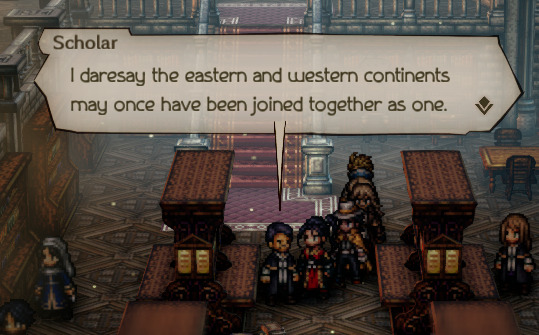
He's theorizing that Solistia may have been one whole continent in the past. Continental Drift Theory. There's even a map that looks a lot like Orsterra in the Guard Outpost in Conning Creek
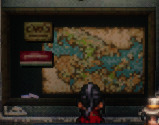
And then we have the geography of the continents.
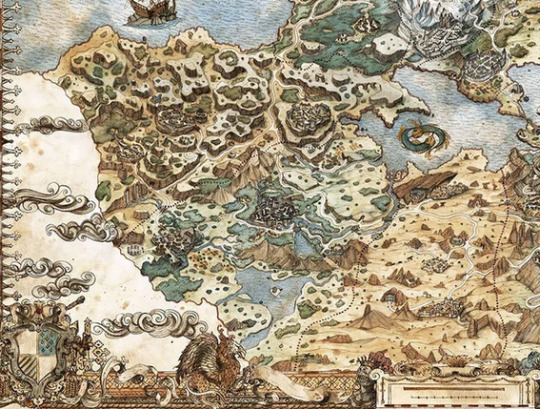

[Side by side of Sunlands, Riverlands, Cliffland and Hineouma, Leaflands, Wildlands]
These three regions are right next to each other, and are in the same orientation as their counterparts, though Solistia stretches up higher, while Orsterra is kept to the South West.
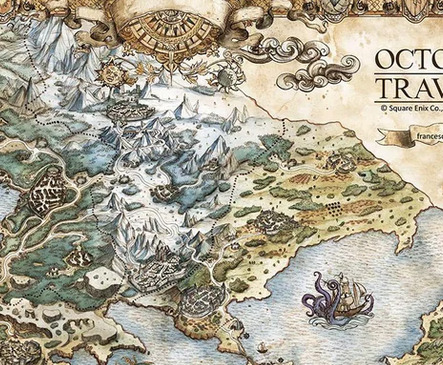

[Side by side of the Frostlands and Winterlands]
Same with both frosty areas. The only regions that don't match up are the Woodlands, Flatlands, Coastlands, and Highlands for Orsterra; The Crestlands, Brightlands, Harborlands, and Toto'haha for Solistia.
But here's the thing. Geography can change overtime. The Flatlands somewhat match The Brightlands, the Coastlands could have become the smattering of Islands once you get past the whirlpool. The Highlands could have broken off and drifted further, much like the Woodlands.
The Gate of Finis, is roughly in the same place in both worlds. Off (roughly) South East in a hard to reach place.
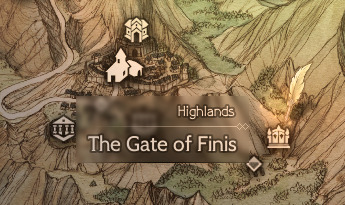

So that's what Geographical evidence I have. Let's get a bit more... Theological about it.
Eight of the Gods are still the same; Aelfric, Alephan, Dohter, Sealtigce, Brand, Draefendi, Aeber, Bifelgan. But we're missing four others.
Dreisang the Archmagus, Winnehild the Warbringer , Steorra the Starseer, and Balogar the Runeblade .
I think, they're lost Gods. Gods who's worship has faded into mystery with barely anything to show for it. In Orsterra, already their arts are thought to be lost unless you find them, and challenge them for it, but they're still known. They're still called The Twelve.
In Solistia, they're lost lost. You can't even find their shrines or any historical evidence, if they even existed at this point.
But you can find their teachings still.
The Armsmasters wielded all 6 weapons and have innovated on the old skills Winnehild would've taught. Winnehild's War Cry became Sixfold Strike, and the Armsmasters developed new techniques to compensate for the lost ones. Notably, there is no divine skill for them, possibly because with Winnehild gone, they have only themselves and her old weapons to rely on.
The Arcanist uses sigils and runes in order to cast their abilities. Transfer Rune became Diffusion. So that's one half of Balogar's teachings.
The Conjurer has the other half. This being isn't mentioned at all in Solistia (As far as I've found). EDIT: Finally read all the Mercantile Manuscript. She's mentioned in the history of Hineouma, but no where else. You only find her in Ku after ascending a tower full of hard fights. When she gives you the class, she gives you at least 4 of the 'Rune' Elements (Because apparently it is anathema to give us more Light and Dark elements. Arcanist Tier 3 spell isn't Tenebrae Operiere, but its something.)
Dreisang's spells are not lost entirely. You can use Alephan's wisdom to at least reclaim 4 of them: Ignis Ardere, Glacis Claudere, Tonitrus Canere, and Lux Congerere.
Steorra is the last one unaccounted for. I haven't seen much, if anything at all, that resembles her abilities, other than possibly in the Conjurer class. I didn't really use that one for more than just elemental trails.
And then we have the Dark Gods. Vide and Galdera.
They are very different gods. One of them is Shadow/Void and Chaos, the other is Life and Death. You can fight them both. However...
Who's to say that conflict with Vide didn't split the continent in two? It was a hard fight for Aelfric on his own, and Vidania is smack in the middle of the sea. Who's to say all that divine power being thrown around didn't crack and split apart the continent into several pieces, eventually drifting apart, though both halves of this one stayed relatively close by each other.
The night left Orsterra in pieces.
And when the dawn rose, it was called Solistia instead.
#octopath traveler#octopath traveler 2#octopath spoilers#am I going crazy conspiracy theory board guy here with strings n what not?#maybe#But this will not leave me alone xD#And it's also what I'm gonna be using for my Octopath gang that I'll make#Steorra plays a part in one of their stories
19 notes
·
View notes
Text
Abheski Cultural Primer
In entering the service of the Company, any Abheski possessed of the virtues we exalt above others – these being leadership, initiative, clarity of thought, and financial acumen – may become successful and the very envy of their fellows. Further, with proper training and discipline these virtues may be cultivated and promoted; so that in the training of cadets, the Companies do their utmost for the benefit of these young officers, and thereby the benefit of the Abheski nation.
To truly benefit the nation, we must first understand who we Abheski are; a nation of diverse parts, no doubt, but possessed of a common history.
We came to these lands from abroad – it is not known where exactly from. Some believe that one of the distant lands of Ycairn is the place of our origin, but most agree that we came from another world. Traditional belief across much of the continent holds that we came from the Sun itself, but others believe our origin is from Fasaath, or Kombyeny, or another point within the night sky.
We Abheski are an industrious, creative, and innovative people. Having tamed patches of the wild expanse of the lands, building towns and farms and trading posts, the most successful and prosperous of our ancestors founded the five great cities – Zhikav, Vilv, Otvev, Mirsvr, and Lansk.
Though we live alongside other peoples, we hold ourselves apart. The Abheski have distinguished ourselves twice by mastery over the skies – first, in building the mighty towers that soar over our cities. Some of these towers are centuries old, and stand strong to this day, the least of them stretching higher than fifty people. In the last few generations, our supremacy over the air was proven again in being the first nation to recreate the science of powered flight; our ships, lifted by mighty dvint, broke us free from the shackles of the land.
Trade is the blood of the Abheski culture. Spread across this harsh and hostile continent, ever taming the ancient forests and defending against the great beasts, our trade is what makes the Abheski prosper above all other people; and the Companies are the pinnacle of Abheski trade. Not restricted to one province, we can deal in goods from across the known world. Not bound to the paths of the rivers and coastlines, we can go anywhere our airships can carry us. Abheski goods are prized from the tents of the Anshessi to the outposts of Hoitan, and if an Ebwari baron wants to exchange letters or goods with a Nalmyan chief, it is most probable that an Abheski vessel will carry their intercourse.
There are other practices that mark us as a peculiar peoples among our neighbours. All nations have their own calendar of celebrations and holidays, and the most important of ours is The Yearsrise festival. Though we differ on which precise day this takes places, Abheski always celebrate the end and beginning of the year around the time of winter solstice. Other peoples reckon the year differently: the Erthani begin at the spring equinox, and the Ebwari count from the height of summer. Other nations practice more curious calendars yet.
Our other important festivals are the First Feast, which in ancestral times celebrated the first hunt after each winter; and the late summer Meetday, where the harvest traditionally begins and the year's differences and disagreements are put aside.
Each city and town observe their Founding Dates. These may variously remember the day the first settlers began to build their new homes, or the day the first Spire was finally completed, but always are celebrated with great revels and public entertainments.
Though we are all Abheski, we may have slight differences in our speech. The rapid speech of a city-dweller may sound different to the calmer pace of a settler from the deep forest; the clipped vowels of Otvev are readily distinguished from the rounder syllables of Zhikav; the plain words of the groundsfolk contrast with the florid oratory of the wealthy classes. All these however are still Abheski, and can readily talk to one another; just try to understand the harsh Hoitani or the singing cadences of the Ebwari to hear how truly different language can sound.
Extract from A Child's Primer and History of the Abheski, published by the Temar Company Press
#artifexian#podcast#worldbuilding#handwavia#ycairn#planetary romance#romance#abhesk#temar company#lansk#vilv#otvev#mirsvr#zhikav#hoitan#ebwar#anshess#erthani#nalmya
5 notes
·
View notes
Note
For the oc's in your story: where is everyone from? I know you said there was some travel within the solar system then it stopped, so are the crew all from the same planet? Are they all from planets at all? (This ask is partially inspired by the fact that star trek enterprise had a character who was born and raised on a space freighter but never really explored that. Such a cool concept but they never gave him the time of day)
Yeah, historically humanity made the moons and planets they could habitable and built big ol space stations and interplanetary travel and trade. Then a few hundred years ago all the comms failed and never came back online. How tech works was hoarded by Luna and Earth so people around Saturn and Jupiter especially struggled to learn how to make things work. They've been mostly relying on things just not breaking for a while now. There are serious constraints around trialing inventions and innovations because so much of the tech you're integrating with is unknown, so advancement is very slow on Saturn
Travel is back, but it's expensive and rare and risky and time consuming. So it's pretty notable when someone has travelled out to Saturn.
No planets beyond got terraformed back in the day, so Saturn is where the livable solar system ends.
So, we've got kind of three zones of where someone can be from
1. A Saturn moon
This is the most normal. Grew up with sky and dirt. Day and night is different on each moon and some cities constantly move to stay in the very slowly shifting perpetual twilight as their moon is tidally locked w the sun. Most moons have some kind of ocean. All livable ones have atmosphere and a reasonable amount of gravity (like, .8 to 1.2)
Life on a moon is functionally similar to regional living. There are cities, but they're more in the half a million people region rather than 12 million. Moons are absolutely about farming and production because livable space is very limited on a station, but on a moon there's a whole lot more flexibility
2. A Saturn space station
High risk! There's been many space stations that had a catastrophic failure and the inhabitants died. Some in living memory. But, these are like the big cities of now so some people like it anyway. Trade is easier because you don't have to spend fuel to leave orbit. Stations have perfect gravity due to some old tech no one is brave enough to inspect (it's a mini black hole in the centre of the station, it will kill you if you get too close)
3. Anywhere else!
This story is set around Saturn, but I have two or three characters from elsewhere.
One is from Luna, he's running from the Vatican (Catholics won the moon) and doesn't talk about home at all. Solar is his second language and Lunan, his first, has no contractions (it's what's can't didn't) so he has a slightly stilted way of speaking. Still working through the catholic guilt of it all. There's absolutely Luna outposts around Saturn and they are all churches. Luna has way more advanced tech and they hoard it like complete assholes. This character was in a major accident and his spine is cybernetic. So, a computer managed his reflexes and automatic body functions. Part of his brain is also cyborg-y to integrate the spinal column. The cultural impact is huge cos he can't hide it, people know he's Lunan and there's rumours about cyborgs he has to deal with. Physiologically I haven't figured out everything he's dealing with, but he requires less oxygen and other complex chemicals cos half his brain doesn't need them. He also is afraid of hospitals cos he doesn't want some Saturnian doctor who's never seen a cyborg before poking around in his circuitry. He has no plan for what to do if something fucks up
Another character is from the asteroid belt! I have very vague ideas about belter culture, but I think it's super worth-based. Like, what's your job and do it once do it right. He doesn't use his personal name (if he even has one) and just takes on his job title as his name, Manifest. So his name changes with job. The belters are all genetically modified to withstand a life of no gravity, I'm still figuring out the medical side effects of that. I really ought to actually read that twin study w the guy who spent a year on the iss. Manifest is quite under described in my story so far, but I've got his personality figured out so that's fine for now. There's gonna be some laws against genetic modification and maybe if Manifest father's a child it has to be un-modified to be allowed to carry to term. That's sort of stuff, but that may not come up in the story we'll see
I've got one other character who I think I'm gonna say was born on a transport ship from Jupiter. That journey takes a couple years so she was a toddler when she arrived around Saturn. I think her paperwork and ID is a bit messy because of this. She's functionally Saturnian in culture tho
5 notes
·
View notes
Text
Like, when a reviewer - or any gamer - complains about, say, a gameplay loop being mediocre, or cliche, or lacking innovation, it's such nonsense to me.
Saying that AFOP is just the same old Ubisoft - essentially fancy Far Cry - is meaningless because, as far as I can tell, games in a certain genre or style are just... the same, at their core. With our current gaming technology, there's only so many ways you can make an action-adventure FPS-type game work, especially if you want it to have general appeal.
Such games generally are "find thing, point at thing, click, and thing dies." Mixed with "go to place, kill things, get thing as reward." Even critically-acclaimed ones are just that: fight thing, get stuff. Over and over and over again.
To me, that criticism blatantly misses why games are fun despite gameplay loops often boiling down to simple, easily repeated formulas. It's everything else. It's the world, the characters, the feeling you get from the context in which that gameplay loop happens.
It's why I don't play other Far Cry games: I don't care about being some rando shooting up outposts in Human Setting #62. It brings me no joy.
What brings me joy is blowing up RDA soldiers and watching all the green come back. Watching beautifully-modeled alien animals walk seamlessly on six legs. Learning where a certain resource grows at a certain high quality and flying there with my ikran while being blinded by the sunset. Seeing arrow deer leap across the plains and appreciating how they fill a similar niche to rainforest hexapedes yet are just different enough to reflect a whole other biome. Listening to the chittery noises kinglor make when swarming. Exclaiming in shock upon realizing that Zeswa structures are part giant beast.
Even in Forspoken, the gameplay loop means so little to me. Is the combat fun? Sure. But that's not the appeal. It's not what kept me playing.
Like... post-canon, when you have to go to Praenost to get that bracket for the bench? There's nothing innovative about a fetch-quest. But I love it because of the stupid character moments it involves: Cuff being sulky over having to go get a thing. Frey being all "well maybe if someone hadn't destroyed everything, resulting in the depletion of all available resources!" Followed by the absurdity of Cuff being weirdly helpful in figuring out which part is actually good enough to fix a bench with.
That's what makes it fun! Not the mechanics of it.
The context.
#i didn't used to care about things like this#but ever since Forspoken's reception and my adoration of it#I've paid so much more attention to the artistic details in games and how hard developers worked to create them#so now when those details are unappreciated i get upsetti-spaghetti real quick
8 notes
·
View notes